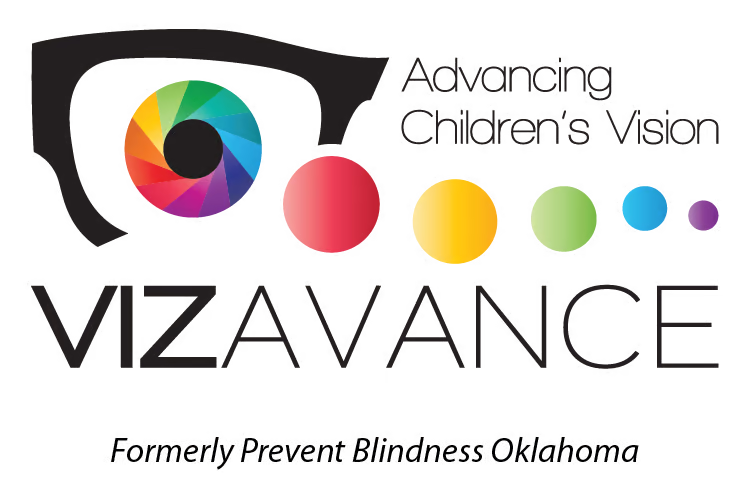The following Vizavance screening components are part of a minimum or baseline for effective children’s vision screening and are state mandated:
STEPS
Distance Visual Acuity Screening
Visual acuity is defined as sharpness of vision; the standard measurement is 20/20.
Distance visual acuity is typically determined by having a person “read” an eye chart at a standardized distance. In Oklahoma, all first graders and third grade students are screened down to the 20/30 line. A passing score for 1st grade and third grade is 20/40 or better in both eyes.
Stereopsis Test (Pass)
Stereopsis is the visual perception of three-dimensional space resulting from the blending of the images in each eye. Stereopsis testing is conducted to determine if the eyes are working together. This is not state recommended but at Vizavance we screen all first graders only with the PASS test.
Near Vision Test
This is a specialized test administered to fourth graders and up to determine if a child is having difficulty viewing objects at close range. With both eyes uncovered the student is asked to read the letters on the 20/30 or 20/32 line.
SPOT Vision Screener Camera
The Spot Vision Screener is a handheld vision screening device that quickly and easily detect vision issues on children from 6 months of age through adult. Spot screens both eyes at once from a nonthreatening 3-foot distance. Spot accurately detects the potential indication of these common vision problems:
State recommends grades Pre K, Kindergarten, Second grade, and Fourth grade through Seniors will be screened with the camera.
- Myopia (nearsightedness)
- Hyperopia (farsightedness)
- Astigmatism (blurred vision)
- Anisometropia (unequal refractive power)
- Strabismus (eye misalignment)
- Anisocoria (unequal pupil size)
Testing for Color Vision
Color Vision Defect – Pseudoisochromatic Plate (PIP) Test – Also known as “Color Blindness,” a genetic color vision defect: Red/Green, Blue/Yellow. This genetic defect will not change over time and is usually symmetrical. Vizavance screens all Kindergartener children with this test.
Seemore Screening Form
All students receive a Seemore screening form, informing the parents or guardians the child was screened at school. The Seemore form also lets the parents or guardians know if they passed or failed.
Referral Letter
Vizavance provides referral letters to a school official who is in charge of the school’s results, letters are sent home with the student letting parents or guardians who do not pass the vision screenings and need a comprehensive eye exam.
Next steps if child does not pass the vision screening
If a child does not pass a vision screening, their parent or guardian will need to call a local optometrist and make an appointment for your child.
*All test are subject to change to accommodate a child and their needs*












